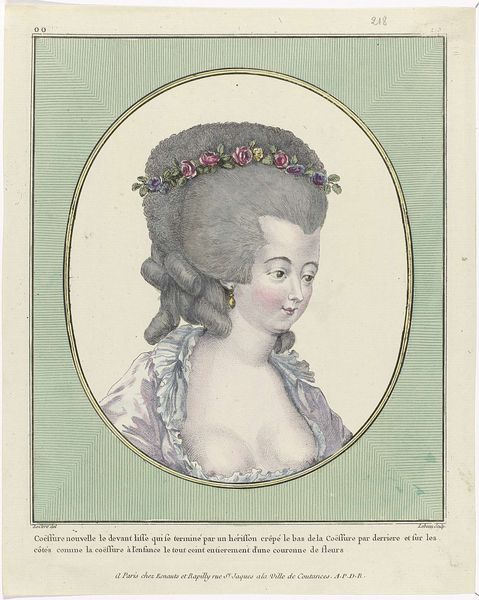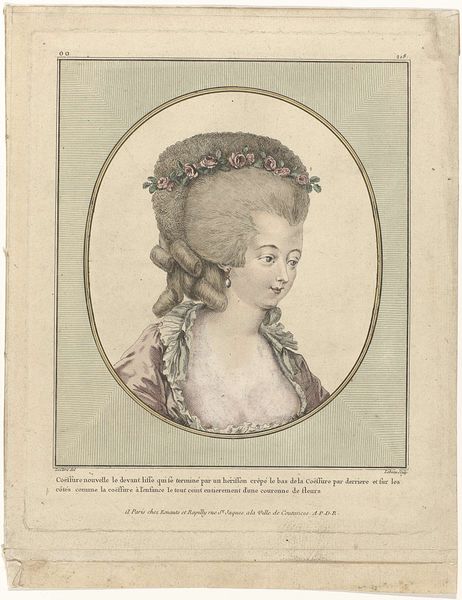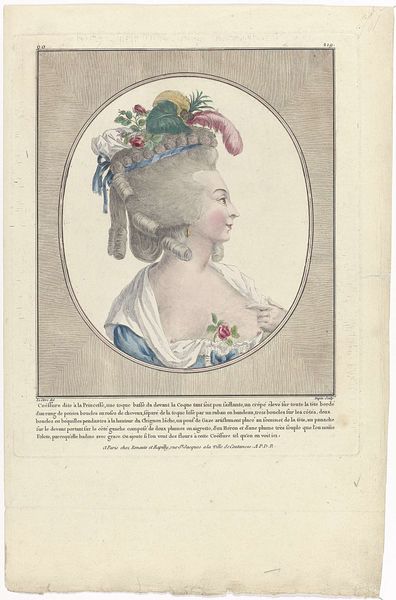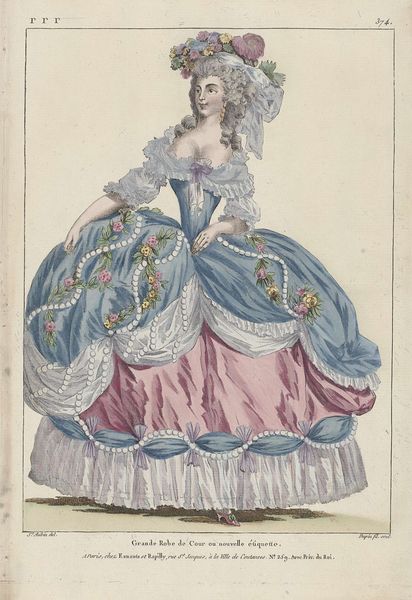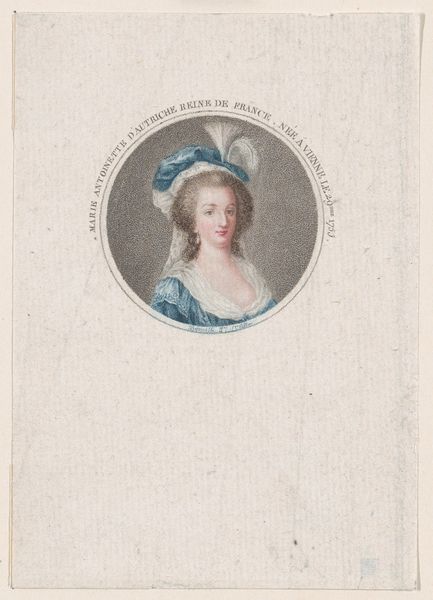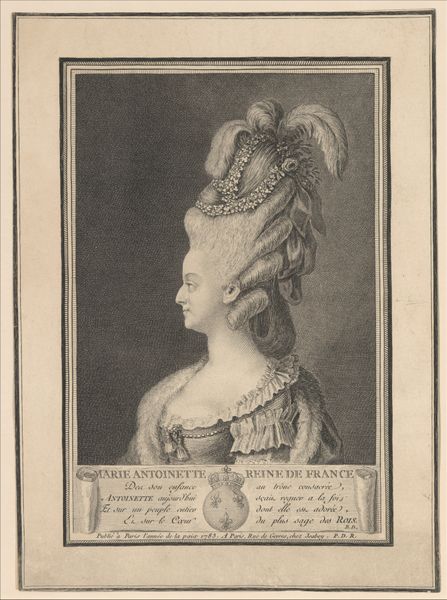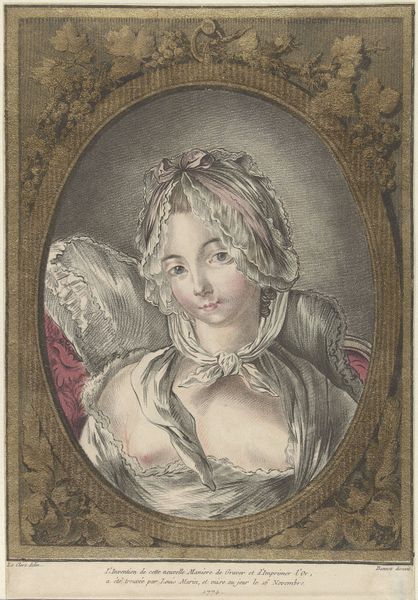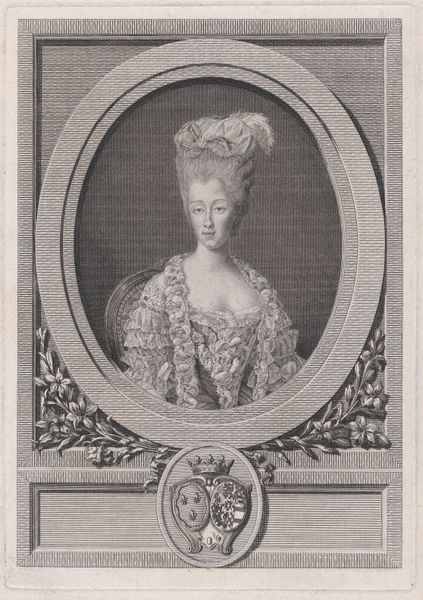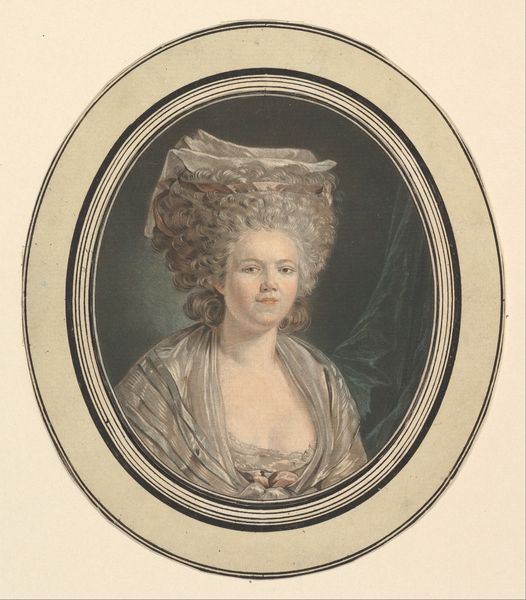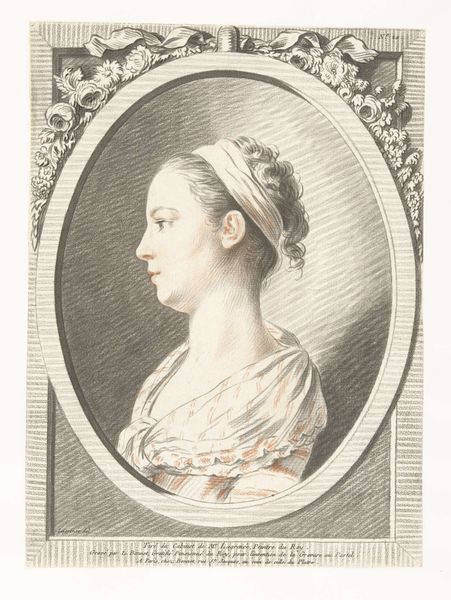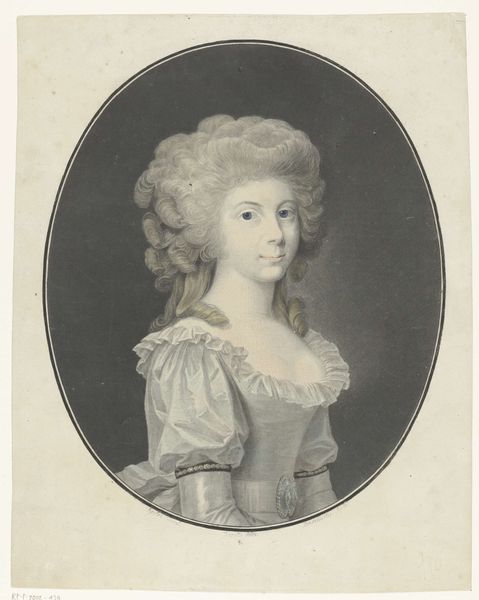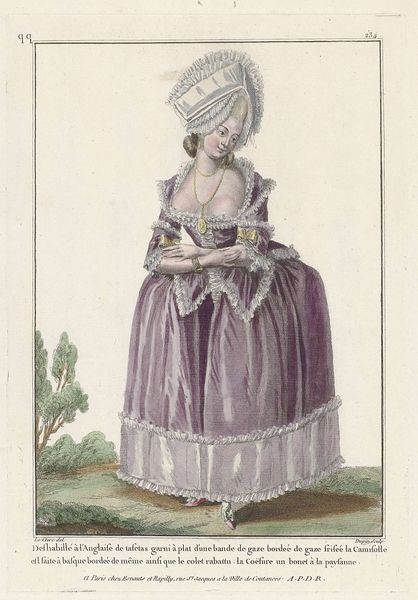
Gallerie des Modes et Costumes Français, 1781, oo 221 : Coeffure nommée à la Levit (...) 1781
0:00
0:00
pierreadrienlebeau
Rijksmuseum
Dimensions: height 276 mm, width 213 mm
Copyright: Rijks Museum: Open Domain
Curator: Immediately striking! The powdered hair, the languid gaze… It’s almost comical in its extravagance, a caricature of aristocratic excess. Editor: I see a potent statement about late 18th-century French society embodied in Pierre Adrien Le Beau's "Gallerie des Modes et Costumes Français, 1781, oo 221: Coeffure nommée à la Lévite…," a watercolor and drawing currently held at the Rijksmuseum. This isn’t simply fashion; it’s a declaration of identity. Curator: Absolutely. The title itself reveals so much. It’s part of a broader series cataloging French fashion, meant to circulate amongst the elite. The 'coiffure' being named highlights how fashion became a spectacle. Hairdressers achieved celebrity status. Editor: And what that "spectacle" reveals is a rigid hierarchy reflected in outward appearance. Note the way the description itself focuses on the hair’s construction, almost like an architectural plan for the upper class. This obsession with presentation masks the anxieties and contradictions of a society teetering on revolution. The sheer volume of hair piled on her head reads like a fragile tower. Curator: True, the Rococo style embraced elaborate ornamentation, yet I see more than just impending doom. I interpret this piece, also, as an intriguing record of daily life in pre-revolution France and its influence on art. How styles traveled through prints like these. It gives us insight into consumption. Editor: I don’t deny that; nonetheless, to ignore the implicit political statement would be a mistake. That elaborate hairstyle needed resources and labor, resources and labor denied to a massive underclass. While aesthetically appealing to some eyes, let’s recognize it for what it truly is: a representation of radical social inequity on the verge of implosion. Curator: Fair enough. Even within the artistic constraints of Rococo, it is hard to turn a blind eye to the fact the woman becomes more ornamentation than a person; less body and more presentation of persona. Editor: Yes, precisely, let's leave our audience to consider its layered message with that in mind.
Comments
No comments
Be the first to comment and join the conversation on the ultimate creative platform.
